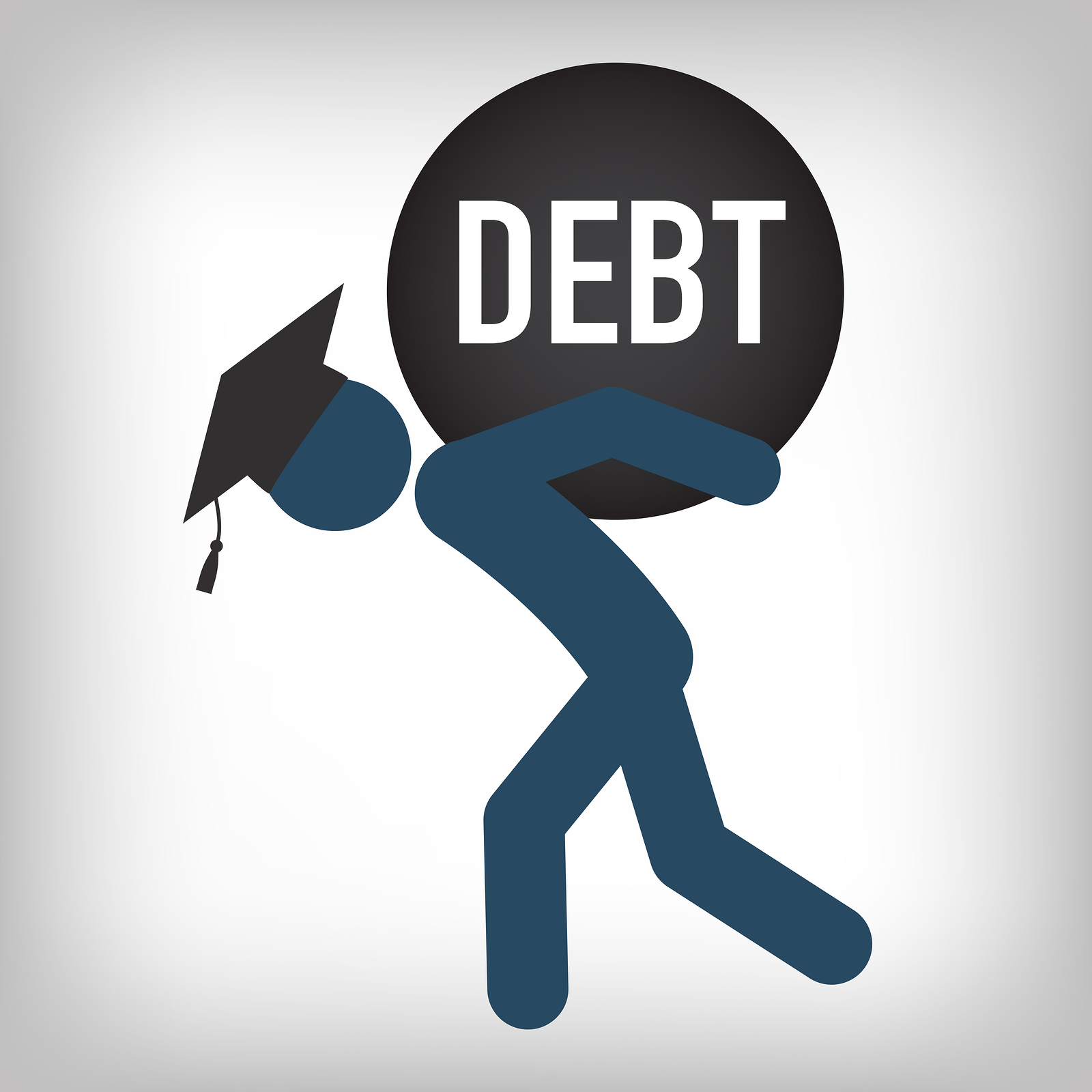As most college students know, choosing a college degree opposed to going to work can leave several in a unfortunate predicament. Some students are left with no choice but to invest in a credit card to fund their living expenses. Some don’t realize the long-lasting effects credit cards have, until it is entirely too late. One late payment can jeopardize a credit score exponentially, not including the expensive fees that are also incorporated. So, before you bite the bullet, here are some things to be considered.
One thing several college graduates have in common is the burden of credit card debt and student loans. According to CNBC, 70 percent of college students graduate with a significant amount of loan (Hess, 2018). The average number of debt is $37,172.00 which is also equivalent to a down payment on a home, brand new car, and business cost startups just to name a few. With the increasing competitive job market, it is crucial for students to obtain there degree however there is also preventive and informative actions students can make in lowering their risk for debt and completing their degree with a lesser hardship of a financial burden.
College students are easily persuaded to rely on a credit card because, quite frankly, the only money that most students have is being put into the student’s schooling and necessities. It is no surprise that according to National Law Review, “by graduation, 56% of students carry four or more cards”. In order to live a lifestyle that students experienced under the care of their established parents, students find themselves reaching to credit cards as the only way to find what feels like financial freedom. These same students find themselves blindsighted five years later with mounds of financial debt. During the early years of using a credit card, students will convince themselves that they are being financially wise by improving their credit. The same students thinking of themselves as financially wise are the same ones with the lowest credit due to inability to pay bills on time.
Student loan and credit card debt is certainly an unavoidable crisis for the majority of college students. For those who do have to resort to borrowing to get that sought after education, there are ways to lessen the burden and manage the debt. According to debt.org, suggested ways to lessen the amount you have to borrow include living with roommates to split expenses, cooking your own meals, carpooling and wearing inexpensive and smart clothing. Borrow only exactly what you need for school and the basic living expenses, if necessary. Working a part time job, if necessary, for some extra income is a solid suggestion as well.
When it comes time to exit college and enter the real world, typically after 6 months you are required to start paying back your student loans. As suggested by debt.com, a way to get a better handle on the mountain of debt is to skip this grace period and start paying on your loans immediately. Another suggestion is to make interest only payments through college, lessening the total cost you pay back on your loans. Be aware of your loans and your repayment options. Your loan service provider might have income-based repayment plans in where your monthly payment is calculated on your income. However, if you are dead set on tackling the debt and have the extra cash source, don’t just pay the minimum payment due! Making additional principal payments can drastically reduce your total amount paid back on your loans and the amount of time you spend paying them back.
An unconventional way of taking on less credit card debt as a college student is to take it slow. (Wadia, 2018) advises: “Try out part time school, and work part time if you can.” If you do not receive any grants or scholarships, you do not have to start at a four year university. Start at a community college, work part time, and if at all possible, LIVE AT HOME! If you look at Bowling Green, KY’s local community college vs. State school price tags, there is a difference of nearly $300 per 1 credit hour. That could equal a $18,000 savings for two years of school. That is $18,000 plus interest you do not have to pay back! Most all General Education courses transfer to the state schools. So instead of racking up credit card debt for food, clothes, rent and the latest gaming console, save your money and enjoy (near) debt free living with a nice salary once you graduate.
Debt is easy to get conditioned to and a tough habit to break. No one’s story and path is the same. Find what works for you. These are a few ideas to make you think “do I really need?” It is always tempting to have what you want now. But if you choose to grind it out for a few years, you 10 years older self will be extremely grateful not worrying about debt.
Sources:
Fay, B. (2017, July 31). How to Manage Your Student Loan Debt | Solutions & Tips. Retrieved March 29, 2019, from https://www.debt.org/students/debt
Hess, A. (2018, February 15). Here's how much the average student loan borrower owes when they graduate. Retrieved March 29, 2019, from https://www.cnbc.com/2018/02/15/heres-how-much-the-average-student-loan-borrower-owes-when-they-graduate.html
Park, R. (2017, February 23). Credit Card Marketing Geared Towards Students and the Policies to Address the Dilemma: Can More Be Done? Retrieved March 29, 2019, from https://www.natlawreview.com/article/credit-card-marketing-geared-towards-students-and-policies-to-address-dilemma-can
Wadia, J. (2018, September 25). How to Avoid Student Debt | Student Debt Relief. Retrieved
March 29,2019, from https://www.studentdebtrelief.us/college-tips/how-to-avoid-student-debt/

Comments
Post a Comment